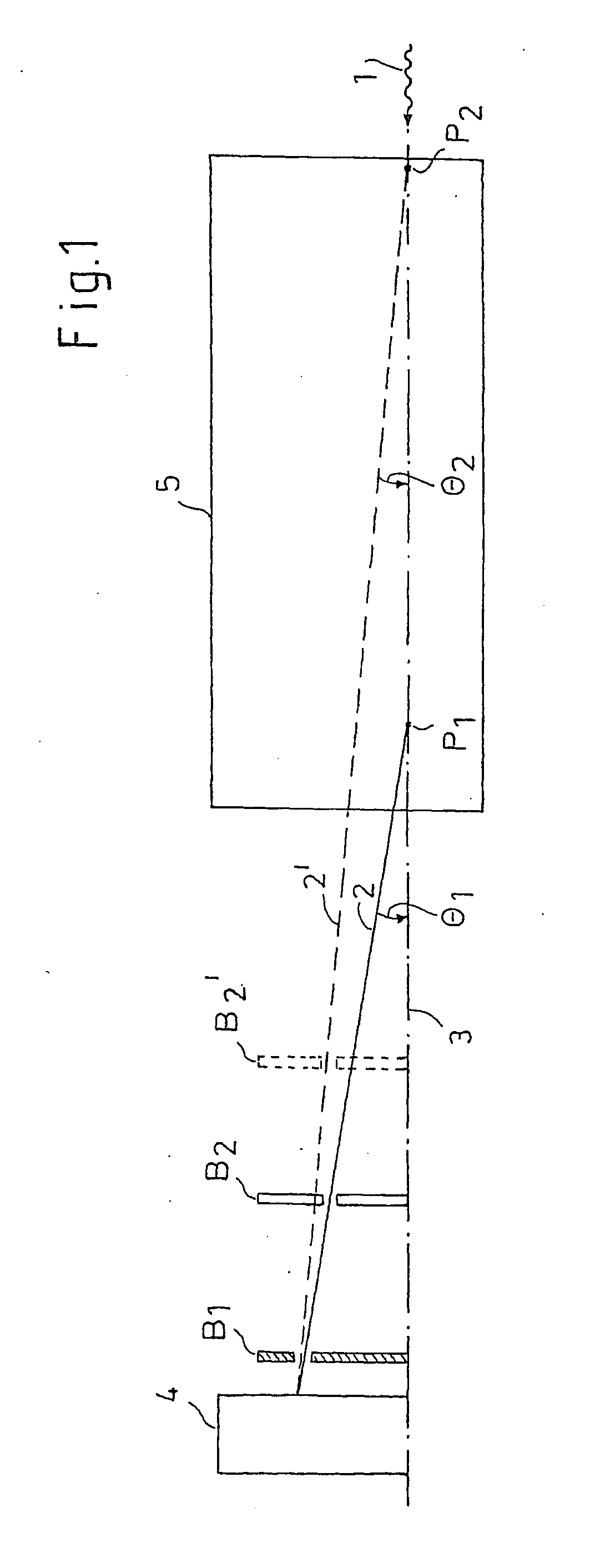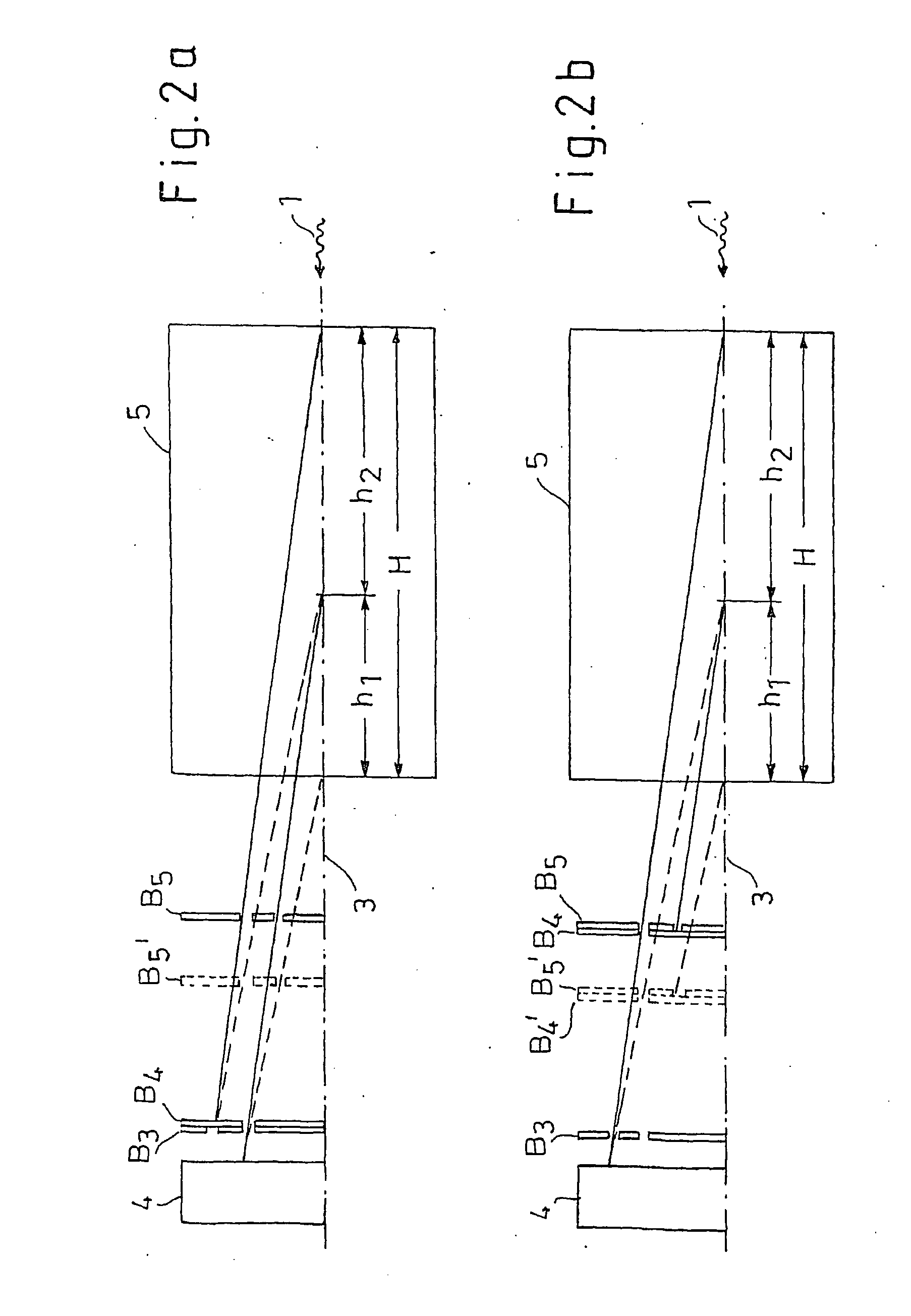Collimator with an adjustable focal length
a collimator and adjustable technology, applied in the direction of material analysis, material analysis using wave/particle radiation, instruments, etc., can solve the problems of high cost of monochromatic x-ray generation, inability to locate within the object to be examined, and high requirement for traveling units, so as to simplify the structure and operation of the x-ray inspection system
- Summary
- Abstract
- Description
- Claims
- Application Information
AI Technical Summary
Benefits of technology
Problems solved by technology
Method used
Image
Examples
Embodiment Construction
[0022]The figures show an operating mode of a collimator with an adjustable focal length with at least two diaphragms, each with at least one substantially circular slot about a common central axis, whereby at least one diaphragm can be displaced along the central axis. The collimator is used in an x-ray inspection system for detecting explosives. For reasons of clarity, a few elements, such as, for example, the housing of the collimator, were omitted. As far as is expedient, in the figures the same elements are provided with the same reference characters.
[0023]In both exemplary embodiments, an object 5 is to be examined along axis 3 for critical substances. Axis 3 is simultaneously the rotation axis of the diffraction phenomenon and the central axis for the diaphragms and their substantially circular slots. Object 5 to be examined is radiated with a pencil beam 1 of broad-band x-radiation along axis 3, whereby the radiation is diffracted in object 5. Then, diffraction spectra are t...
PUM
| Property | Measurement | Unit |
|---|---|---|
| focal length | aaaaa | aaaaa |
| spectra | aaaaa | aaaaa |
| atomic lattice distance | aaaaa | aaaaa |
Abstract
Description
Claims
Application Information
 Login to View More
Login to View More - R&D
- Intellectual Property
- Life Sciences
- Materials
- Tech Scout
- Unparalleled Data Quality
- Higher Quality Content
- 60% Fewer Hallucinations
Browse by: Latest US Patents, China's latest patents, Technical Efficacy Thesaurus, Application Domain, Technology Topic, Popular Technical Reports.
© 2025 PatSnap. All rights reserved.Legal|Privacy policy|Modern Slavery Act Transparency Statement|Sitemap|About US| Contact US: help@patsnap.com



